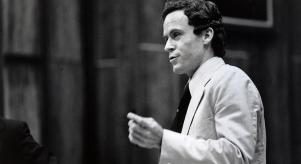
Why The Oklahoma City Bombing Is Still Relevant
It’s often said we’re now living in a “post-truth” era – a time of polarized ideologies, brazen propaganda and battle-lines drawn in the world of social media. Seemingly ordinary people exist on a hair-trigger of potential hatred, ready to point fingers, despise strangers and even commit random acts of violence to further their “cause”.
Yet the seeds of our current climate were sown in the days before social media, before the modern Internet. Back in the 1990s, in the years after the peaceful end of the Cold War, when some pundits hailed the “end of history” and believed the great ideological battles of the past were finally over, a new politics of fear, nationalism, paranoia and resentment began to build. It was spread by old fashioned means – word of mouth, secret gatherings and even a novel. In its virulent contempt for the “establishment” and the “status quo”, it predicted the kind of widespread angst and anger we see casually thrown around today. And it was announced to the world through one devastating event: the Oklahoma City bombing of 19 April 1995, when 168 people were murdered by terrorist Timothy McVeigh.
Who was McVeigh? The boy next door. The ordinary, all-American guy whose future plans, written in his high school yearbook, were “take it as it comes, buy a Lamborghini, California girls”. Somehow, he went from this, to the man who later wrote a letter to a newspaper saying “Is a Civil War Imminent? Do we have to shed blood to reform the current system? I hope it doesn't come to that. But it might.”
McVeigh, despite appearances, had always been a misfit, bullied at school and bitter towards authority figures. His feels were intensified by a stint in the US army. Serving in the first Gulf War, he found himself questioning why he’d been dispatched to kill strangers in a strange land, and started to detest American foreign policy.
Like many on the extreme right, whom he mingled with at gun shows, McVeigh believed the US government was a tyranny-in-waiting, poised to take away the freedom of citizens to bear arms. This theory was seemingly confirmed by two bloody incidents in the early 90s.
The first was the fiasco of Ruby Ridge, in which federal agents attacked the isolated home of a man called Randy Weaver and his family. Weaver was loosely associated with white supremacists and separatists, but was essentially a Christian survivalist who just wanted to be left to raise his family with minimal contact with a society he saw as corrupt. He was charged with firearms offences, and a tragic shootout occurred near his home, which left a US marshal and Weaver’s own teenage son dead. This led to a protracted siege, culminating in a sniper killing Weaver’s unarmed wife.
White nationalists saw Ruby Ridge as far more than just a blood-soaked blunder by the feds. They saw it as proof the liberal government was cracking down on ordinary, God-fearing civilians. Not long afterwards came the second key moment: the siege at Waco.
This was the stand-off between federal agents and a religious cult led by the self-proclaimed prophet David Koresh, holed up in a compound in Texas. Again, firearms offences were the cause. And again, there was a bloody result, only on a much bigger scale. When federal agents tried to raid the ranch, the building erupted in flames, with almost 80 people dead – including many children.
FBI are the aggressors. They're a military force at war… with the American people.
Timothy McVeigh was there at Waco, selling anti-government bumper stickers to other onlookers. He was by this point a committed rebel and conspiracy theorist. Ruby Ridge and Waco had radicalized him. “Who are the aggressors?” he asked. “The FBI are the aggressors. They're a military force at war… with the American people.”
McVeigh was also a fan of The Turner Diaries, a now-notorious dystopian novel which depicted a mass uprising by white nationalists, culminating in the wholesale slaughter of liberals, Jews and non-whites, and eventual nuclear Armageddon. Circulated on the fringes of society, The Turner Diaries became a blueprint for violent radicals. One typical scene in the novel, featuring a truck bomb attack on a government building, provided catastrophic inspiration for Timothy McVeigh.
Joining forces with two old army buddies who shared his world-view, McVeigh gathered together vast amounts of fertilizer, as well as the other ingredients for a truck bomb. One of his accomplices got cold feet and dropped out. And, just before the attack, so did the other. McVeigh was undeterred. He filled a rental truck with the explosives, parked it outside the Alfred P. Murrah Federal Building in Oklahoma City, and walked away.




